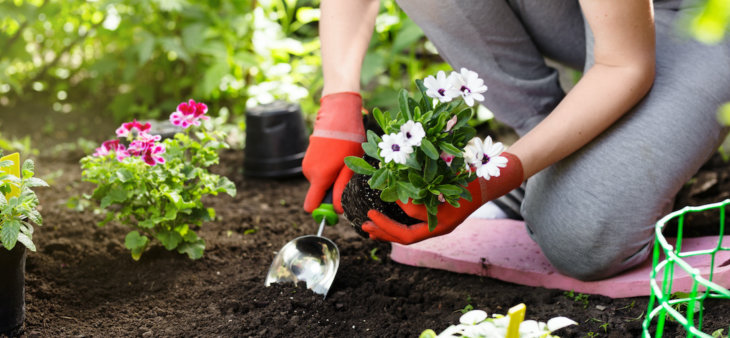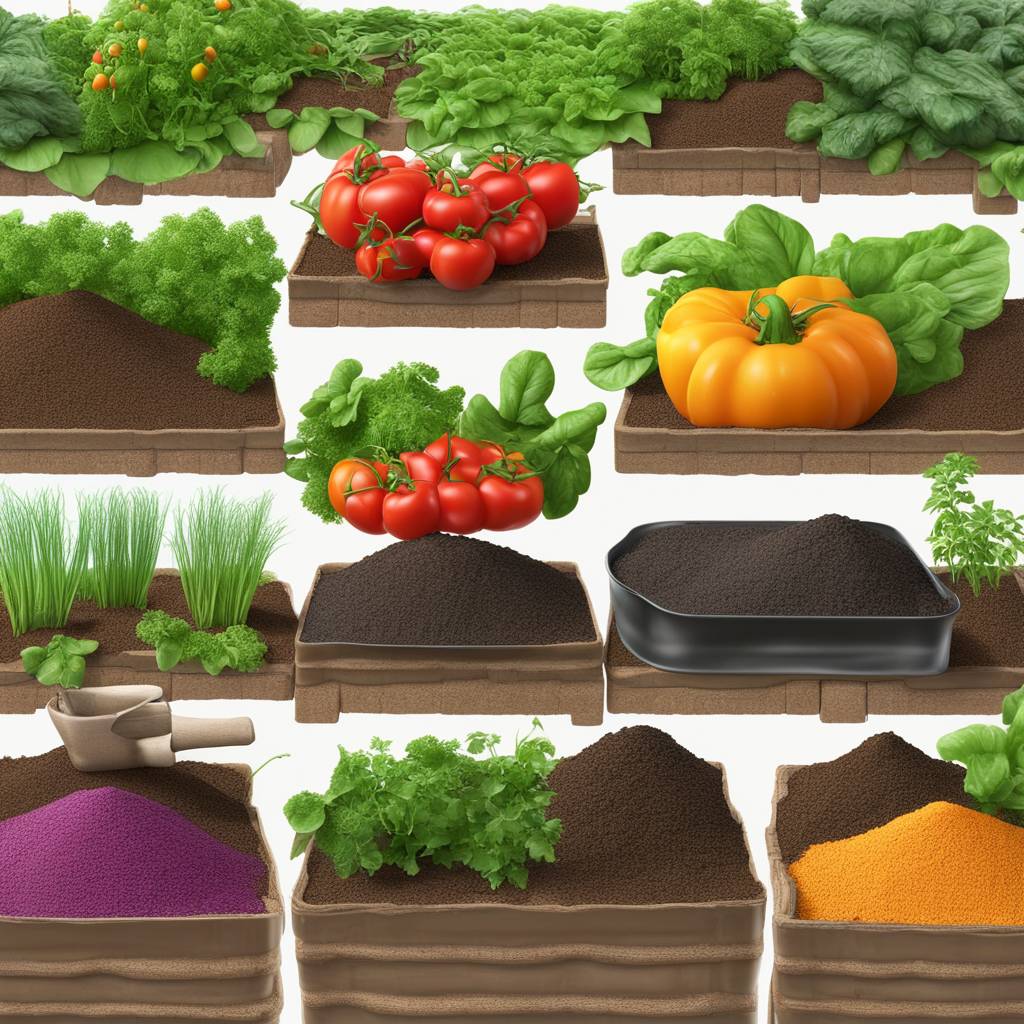While many people view food waste as a problem, home composting can actually be part of the solution. By transforming your kitchen scraps into nutrient-rich compost, you not only reduce landfill waste but also create a valuable resource for your garden.
Composting food scraps, organic waste, and yard waste may seem daunting at first, but with the right techniques and know-how, it can be an easy and rewarding process. We’ll discuss essential tips to accelerate decomposition while minimizing odors and pests. Whether you’re a seasoned composter or just starting out on your sustainability journey, these insights will help you turn your kitchen waste into black gold for your plants.
Key Takeaways
- Start with the basics: Understanding the key principles of home composting is essential for successful waste management.
- Balance is key: Use a mix of green and brown materials to create a nutrient-rich compost pile.
- Explore various methods: Consider indoor, outdoor, backyard, and vermicomposting solutions based on your space and needs.
- Avoid pitfalls: Be mindful of common mistakes to ensure the effectiveness of your composting efforts.
- Stay safe and sustainable: Implement rodent prevention measures and adopt winter composting strategies for year-round success.
- Engage with your community: Get involved in local composting initiatives to contribute to a more sustainable environment.
Understanding the Basics of Home Composting
The Decomposition Process
Composting kitchen scraps is a way to participate in the decomposition process. This natural method breaks down organic materials like fruit and vegetable peels, coffee grounds, and eggshells into nutrient-rich soil. By understanding how cold composting works, you can effectively turn your food waste into finished compost, a valuable resource for your garden. When these kitchen scraps decompose, they transform into compost that provides essential nutrients for plants to grow strong and healthy.
The home composting of kitchen scraps significantly reduces the amount of food waste that goes to landfills. Instead of contributing to environmental issues associated with landfill disposal, such as methane gas emissions, you are creating an eco-friendly solution by repurposing organic matter from your home.
Essential Tips for Home Composters
To ensure successful decomposition when composting at home, follow best practices with food scraps, food waste, kitchen waste, and soil.
- Balance is key: A good mix of green (nitrogen-rich) and brown (carbon-rich) materials is crucial for effective decomposition. Green materials include fruit and vegetable scraps, while brown materials consist of items like dry leaves or shredded paper.
- Proper aeration: Turning or aerating the compost pile regularly helps introduce oxygen, which accelerates the decomposition process.
- Moisture management: Maintaining proper moisture levels within the pile ensures that microorganisms responsible for breaking down organic matter remain active.
It’s important to remember that kitchen waste and food scraps should not be added to your bin. Avoid including meat products or dairy items in your compost as they can attract pests and slow down the decomposition process.
Benefits of Home Composting
Engaging in home composting offers various benefits beyond just reducing waste, including food and water.
- Environmental impact: By diverting food waste from landfills, you contribute positively toward reducing greenhouse gas emissions.
- Soil enrichment: The resulting compost acts as a natural fertilizer rich in essential nutrients such as nitrogen, phosphorus, potassium—benefiting plant growth.
- Cost-effective gardening: Instead of purchasing commercial fertilizers or soil conditioners, using homemade compost saves money while providing high-quality nourishment for plants.
Essential Ingredients for a Balanced Compost Pile
Green and Brown Materials
A balanced compost pile relies on a mix of green and brown materials, food, and water. The green, or nitrogen-rich, components include everyday kitchen scraps, grass clippings, and fresh plant trimmings. On the other hand, brown, or carbon-rich, elements consist of dried leaves, straw, and shredded newspaper.
Achieving the right balance between food and these two types of materials is crucial for successful composting. For instance, an excess of green matter can lead to a smelly pile due to inadequate airflow. Conversely, an overabundance of brown material may slow down decomposition because it lacks essential nutrients.
It’s important to note that kitchen scraps, including food, are valuable contributors to the nitrogen content in your compost pile. Items such as fruit and vegetable peels, coffee grounds, eggshells (crushed), and even tea bags add vital nutrients while reducing waste sent to landfills.
Moisture Levels and Aeration
Maintaining proper moisture levels within your compost pile, including food, is equally critical for its success. The ideal moisture range falls between 50% to 60%. This level ensures that the microorganisms responsible for breaking down organic matter thrive without drowning in excess water or drying out from insufficient hydration.
To achieve this optimal moisture level:
- Regularly monitor the dampness by squeezing a handful of compost; it should feel like a damp sponge.
- Adjust as necessary by adding water when too dry or incorporating more dry leaves if overly wet.
Moreover, aerating your compost pile promotes beneficial bacterial growth while preventing foul odors associated with anaerobic conditions. Mixing or turning your compost every few weeks introduces oxygen into the mixture which encourages efficient decomposition.
Indoor and Outdoor Composting Solutions
Types of Composting Methods
There are various options to consider based on your living situation. For those with limited outdoor space, indoor composting methods like vermicomposting or Bokashi bins are ideal. Vermicomposting uses worms to break down organic waste, while Bokashi bins utilize a fermentation process to compost kitchen scraps. On the other hand, outdoor composting solutions such as traditional compost bins or tumblers are suitable for larger amounts of kitchen scraps and garden waste.
Indoor composting is perfect for individuals who live in apartments or urban areas without access to outdoor facilities. Vermicomposting involves using worms such as red wigglers or earthworms in a container placed under the kitchen counter. This method effectively breaks down organic materials like fruit and vegetable peels into nutrient-rich fertilizer that can be used for houseplants or gardens.
Bokashi bins offer another convenient way to manage kitchen waste indoors by fermenting all types of food waste, including meat and dairy products, which cannot be added to traditional outdoor open bins due to odors and pests they may attract. The fermented material produced from this method can then be buried outdoors where it continues decomposing into soil.
Choosing the Right Method
Selecting the appropriate composting method depends on your specific needs and available space. If you have a small apartment with no access to a garden area but want an eco-friendly way of managing your organic materials, vermicomposting would be an excellent choice. Conversely, if you have a backyard with ample space and generate significant amounts of kitchen scraps along with garden waste, an outdoor open bin might suit you better.
Considering factors such as air circulation, odor control, ease of use, and maintenance requirements is crucial when deciding between different ways of handling kitchen scrap composting. Both vermicomposting containers and Bokashi bins come with fitting lids that help control odors while also keeping pests at bay.
Ultimately,composters should evaluate their individual circumstances before selecting the most suitable method, whether it’s purchasing plastic containers online for indoor use or setting up traditional open bins outdoors.
Backyard Composting Techniques and Management
Layering Materials
When composting kitchen scraps, it’s crucial to layer green and brown materials in your compost pile. This helps maintain proper moisture levels and airflow. Green materials include fruit and vegetable scraps, while brown materials consist of items like dry leaves or shredded newspaper.
Layering these materials creates a balanced environment for the decomposition process. For instance, by alternating between layers of grass clippings (green) and dry leaves (brown), you can ensure that the compost pile doesn’t become too wet or compacted.
This balance is essential as excessive moisture can lead to a smelly, anaerobic environment, while inadequate moisture can slow down decomposition. By maintaining this equilibrium, you’re creating an optimal setting for beneficial microorganisms to thrive and break down the organic matter efficiently.
Aeration Techniques
Regularly turning or aerating the compost pile is another key practice when composting kitchen scraps. This process introduces oxygen into the mix, which accelerates decomposition while preventing unpleasant odors from forming.
A simple way to achieve this is by using a pitchfork or shovel to turn over the contents of the compost bin every few weeks. Some compost bins are designed with built-in mechanisms that allow for easy rotation or mixing of the materials.
By aerating the compost pile regularly, you’re ensuring that all parts of it receive adequate airflow. This prevents any pockets within the pile from becoming stagnant or devoid of oxygen – conditions that could impede microbial activity necessary for breaking down organic matter effectively.
Monitoring Conditions
Monitoring temperature, moisture content, and making adjustments as needed are vital aspects when composting kitchen scraps. It’s important to check on your compost regularly to ensure optimal conditions for decomposition.
For example:
- Checking internal temperatures: Aim for a range between 110°F – 160°F (43°C – 71°C). Temperatures outside this range may indicate issues such as insufficient aeration.
- Assessing moisture levels: The ideal consistency should resemble a wrung-out sponge – damp but not dripping wet.
- Adding water or dry material: If your compost is too dry, add water; if it’s overly wet, incorporate more brown materials like dried leaves.
Vermicomposting with Worms
Efficient Organic Waste Breakdown
Vermicomposting is a process that utilizes worms to break down food scraps into nutrient-rich worm castings. Red worms, specifically the Eisenia fetida species, are commonly used for vermicomposting due to their efficiency in consuming organic matter. These worms have voracious appetites and can consume large amounts of kitchen waste.
The breakdown of food scraps by the worms creates a rich soil amendment known as worm castings. This substance is packed with essential nutrients and beneficial microorganisms that promote healthy plant growth. By utilizing these tiny creatures, homeowners can efficiently manage their kitchen waste while creating valuable resources for their gardens.
Crucial Factors for Success
Maintaining proper bedding material, moisture levels, and feeding habits are crucial for successful vermicomposting. The bedding material provides a habitat for the worms and helps maintain proper moisture levels within the composting system. Common bedding materials include shredded newspaper, cardboard, or coconut coir.
Adequate moisture is vital for the survival of the worms and the decomposition process. Too much moisture can lead to anaerobic conditions that produce unpleasant odors and attract fruit flies; too little moisture can cause dehydration among the worms and slow down decomposition.
Feeding habits also play a significant role in vermicomposting success. While red worms thrive on a diet of vegetable scraps, fruit peels, coffee grounds, and other untreated organic matter from your kitchen waste bin or garden trimmings provide an ideal food source for them.
Avoiding Common Composting Mistakes
What to Avoid
When composting kitchen scraps, it’s crucial to avoid common mistakes that can hinder the decomposition process. Firstly, refrain from adding meat, dairy products, or oily foods to your compost pile as they can attract pests and slow down decomposition. These items also have a tendency to create unpleasant odors in the compost.
Ensuring a proper balance of green and brown materials is essential. Green materials include fruit and vegetable scraps, coffee grounds, and grass clippings while brown materials consist of dry leaves, straw, and shredded paper. This balance prevents a smelly or slimy compost pile.
Moreover, it’s important to steer clear of excessive moisture or dryness in the compost pile. Too much moisture can lead to a foul-smelling anaerobic environment while extreme dryness slows down the decomposition process.
Balancing these elements will help maintain an optimal environment for decomposition by providing necessary nutrients for the microorganisms responsible for breaking down organic matter.
Pro Tips for Effective Composting
To ensure effective composting of kitchen scraps, consider these pro tips:
- Mix green and brown materials thoroughly: By mixing green (nitrogen-rich) and brown (carbon-rich) materials properly before adding them to the compost bin or pile, you’ll create an ideal environment for microbial activity.
- Use a compost aerator: Turning your compost regularly with an aerator helps introduce oxygen into the mix which speeds up decomposition.
- Keep track of moisture levels: Check on your compost regularly; it should feel like a damp sponge – not too wet or too dry.
- Utilize natural accelerators: Adding natural accelerators such as garden soil rich in microorganisms or finished compost will jumpstart the breakdown process.
By following these tips diligently when managing your kitchen scrap composting efforts, you’ll be able to produce nutrient-rich soil amendment material without any foul odor issues.
Rodent Prevention and Safety in Composting
Avoiding Rodent-Attracting Food Scraps
When composting kitchen scraps, it’s crucial to avoid adding food items that are attractive to rodents. Items such as meat, bread, and dairy products can entice rodents to your compost pile. These high-protein foods not only lure rodents but also take longer to break down, potentially causing odors that attract unwanted pests.
pet waste, including dog waste, should be excluded from the compost bin or pile. Pet waste can contain harmful pathogens and parasites that may not be fully eliminated during the composting process. This exclusion helps prevent attracting rodents while ensuring the safety of your compost for future use in gardens.
Securely Covering the Compost Pile or Bin
To deter rodents from accessing your compost pile or bin, it’s essential to securely cover it. A tightly sealed lid or a well-fitted cover prevents easy access for pests while retaining heat and moisture within the composting environment. By keeping potential rodent attractants out of reach and creating an inhospitable environment for them, you can effectively reduce the risk of infestation.
Regularly inspecting the area around your compost setup is equally important in preventing rodent intrusion. Look for signs such as burrow holes near or under the pile/bins and chew marks on nearby structures. If any indications of rodent activity are found, take necessary measures promptly to eliminate them before they become a larger issue.
Winter Composting Strategies
Insulation Tips
When composting kitchen scraps during winter, it’s crucial to insulate the compost pile using straw or leaves. This insulation helps maintain heat within the pile, aiding in the decomposition process despite the cold temperatures. By adding a thick layer of straw or leaves on top of your compost pile, you create a barrier that retains warmth and supports microbial activity.
Covering your compost with an insulating material acts as a protective shield against freezing temperatures. This is especially important for outdoor compost piles exposed to harsh winter conditions. The insulation not only keeps the internal temperature stable but also prevents moisture loss due to evaporation caused by cold winds.
Minimize Turning
During winter months, it’s best to minimize turning your compost pile. Turning the pile too frequently can disrupt its ability to retain heat and slow down decomposition. Instead, allowing the materials to settle naturally promotes heat retention and sustains microbial activity within the compost.
By reducing agitation and disturbance within the pile, you enable beneficial organisms such as bacteria and fungi to thrive undisturbed. These microorganisms play a vital role in breaking down organic matter even in colder weather conditions.
Indoor Composting Methods
In extreme cold temperatures, consider utilizing indoor composting methods as an alternative approach for managing kitchen scraps during winter. Cold composting indoors involves using specialized bins designed for controlled decomposition without relying on external heat sources.
These insulated bins provide a regulated environment conducive to year-round composting without being affected by outdoor climate variations. Furthermore, they offer convenience and flexibility for individuals living in regions with severe winters where outdoor compost piles may become impractical due to freezing temperatures.
Community Engagement in Composting Efforts
Raising Awareness
Encouraging waste composting within the community is crucial for reducing the burden on landfills and promoting sustainability. By organizing workshops or educational events focused on composting kitchen scraps, communities can effectively raise awareness about the environmental benefits of diverting food waste from landfills. These events provide valuable guidance to individuals who may be new to the concept of composting, empowering them to take action in their own homes.
Collaborating with local organizations or municipalities plays a pivotal role in establishing widespread community-wide initiatives for composting kitchen scraps. By partnering with these entities, communities can implement structured programs that facilitate the collection and processing of organic materials such as food scraps and green waste into nutrient-rich soil amendments. This collaborative approach not only streamlines the composting process but also ensures that a larger portion of organic waste is diverted from landfills, contributing significantly to sustainable practices within the community.
Engagement efforts could include hosting interactive demonstrations showcasing how simple it is to turn everyday items like fruit peels, vegetable scraps, and even paper into beneficial soil additives through composting. Providing hands-on experiences at these events helps individuals understand how they can actively participate in reducing landfill waste while simultaneously enriching their gardens or landscapes.
Building Partnerships
In addition to raising awareness through educational activities, building partnerships with local businesses and institutions offers opportunities for expanding sustainable practices related to waste composting. For instance, collaborating with grocery stores or restaurants could lead to effective management of food waste by diverting excess produce or expired goods towards communal composting programs rather than sending them off to landfills.
Furthermore, engaging schools in implementing composting initiatives provides an excellent platform for educating younger generations about responsible environmental stewardship while instilling good habits early on. Students can learn firsthand about transforming organic materials into beneficial soil amendments through dedicated classroom projects or school-wide programs focused on collecting cafeteria food scraps for composting purposes.
Final Remarks
You’ve now got the lowdown on composting like a pro! Whether you’re diving into backyard composting, setting up a worm bin, or rallying your community for a composting initiative, you’re making a real difference. Remember, every banana peel and coffee ground diverted from landfills is a win for our planet. So, keep those organic scraps out of the trash and let them work their magic in your compost pile. Get your hands dirty, mix those greens and browns, and watch nature perform its recycling symphony right in your own backyard!
Now, it’s time to put all this knowledge into action. Start small if you’re new to composting, and gradually scale up as you gain confidence. Share what you’ve learned with friends and family – the more composting enthusiasts, the merrier! Together, we can turn food scraps into black gold and nourish the earth. Happy composting!
Frequently Asked Questions
What are the essential ingredients for a balanced compost pile?
To create a balanced compost pile, you’ll need a mix of “green” materials like fruit and vegetable scraps, along with “brown” materials such as leaves or newspaper. The green supplies nitrogen while the brown provides carbon, fostering healthy decomposition.
How can I prevent rodents in my composting area?
To deter rodents from your composting area, avoid adding meat, dairy products, or oily foods to the pile. Use tightly sealed bins and regularly turn the compost to discourage unwanted visitors.
What are some indoor and outdoor composting solutions?
For indoor spaces, consider using a small countertop bin for food scraps before transferring them to an outdoor composter. Outdoor options range from traditional bins to tumblers or vermicomposting systems depending on your space and needs.
How do I engage my community in composting efforts?
Engaging your community in composting can involve organizing workshops or demonstrations on home composting techniques. You could also collaborate with local schools or organizations to promote awareness about reducing organic waste through communal efforts.
What are some winter composting strategies?
In colder months, insulate your outdoor composter with straw or cardboard to retain heat. Consider chopping materials into smaller pieces for faster decomposition during winter. Indoor vermicomposting is another option that works well year-round.






